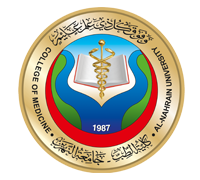|
Vol. 18 Issue 1 January - June / 2020
Published on website | Date : 2021-08-15 10:36:55
Association of CD46 Cellular Receptor Gene SNP in Measles Vaccine ResponseSarah A.J. Al-Gburi, Haidar Sabah Kadhim, Haider F. GhaziAbstractBackground: Measles is a highly contagious viral disease. It remains an important cause of death among young children globally, despite the availability of a safe and effective vaccine. Measles transmitted via droplets from the nose, mouth or throat of infected persons.
Objective: To evaluate the immune response to measles infection among immunized school aged children, and to detect the cluster of differentiation 46 single nucleotide polymorphism (CD46 SNP) in association with the immune response. Methods: The current study is a cross sectional study including 158 hospitalized patients were previously vaccinated with two doses of measles-mumps-rubella vaccine. The ages of patients were 5-10 years school aged children. All samples were collected from blood collection unit in Al-Imamein Al-Kadhimein Medical city during the period from December 2018 to April 2019. The detection was based on the presence of IgG Antibody to measles. The positive results were considered according to enzyme linked immunosorbant assay and conventional polymerase chain reaction to detect CD46 SNP. Results: Among those 158 subjects' male children count for 62% and female children were 38%. Forty-one (41) immunized children (with mean age 7.98±1.92 years) were low immune response to measles vaccine (MV). On the other hand, only two cases (with mean age 5.50±0.71 years) were negative to measles virus vaccine. Conclusion: Ensuring two doses of MV give protective immune response to MV may declines with aging. CD46 cellular receptor gene SNP (rs7144) may play role in reduction in immune response to MV. Keywords: Measles, MMR, CD46, SNP, Iraq Citation: Al-Gburi SAJ, Kadhim HS, Ghazi HF. Association of CD46 Cellular Receptor Gene SNP in measles vaccine response. Iraqi JMS. 2020; 18(1): 39-46. doi: 10.22578/IJMS.18.1.6 Full-text |
Some tools below are only available to our subscribers or users with an online account |
 |
Please wait until the current process completes ... |



